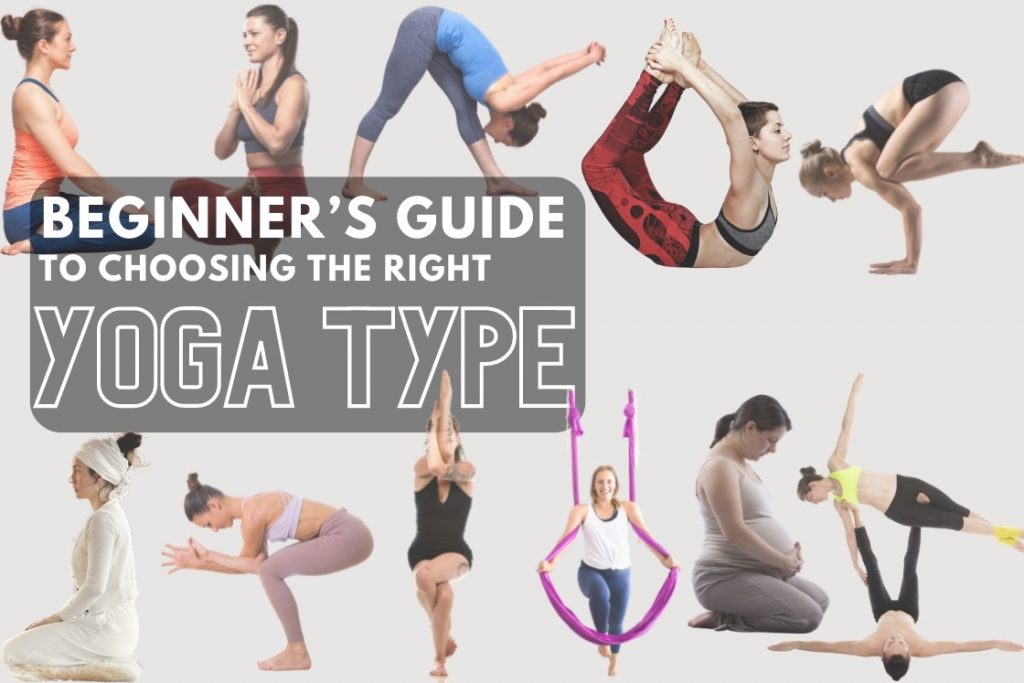
Yoga comes from the Sanskrit word “yuj”, which means to unite or join. At its core, yoga is about creating harmony between the body, mind, and breath. With roots that go back over 5,000 years, it has evolved into many styles each offering a unique way to practise movement, mindfulness, and self-awareness.
Today, there are many different types of yoga, each with its own approach to movement, breathing, and meditation. From the slow and steady Hatha Yoga to the intense flows of Ashtanga or the aerial lifts of Acro Yoga, yoga has evolved into a practice with something for everyone.
Here are 13 of the most popular types of yoga styles practised around the world:
- Hatha yoga
- Ashtanga yoga
- Vinyasa yoga
- Iyengar yoga
- Hot yoga
- Kundalini yoga
- Restorative yoga
- Yin yoga
- Power yoga
- Sivananda yoga
- Aerial yoga
- Prenatal yoga
- Acro yoga
So how do you choose the right style for you?
In the sections below, we break down each yoga type highlighting its benefits, core techniques, and what to expect in a typical class. Whether you’re a complete beginner or looking to deepen your practice, this guide will help you find the yoga style that fits you best.
1. Hatha Yoga
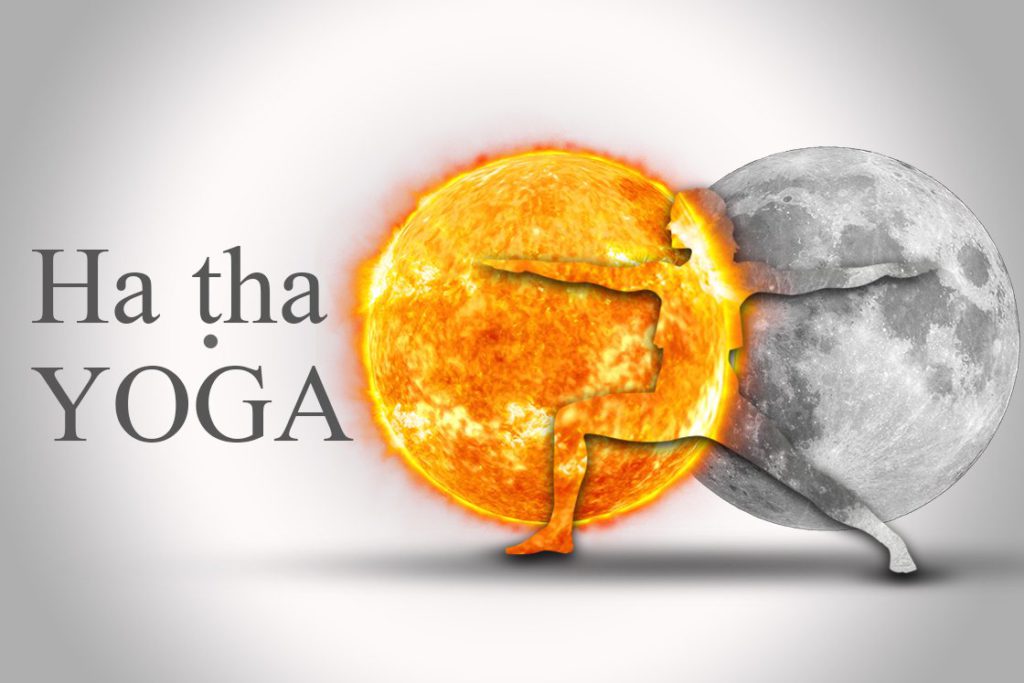
Hatha Yoga is one of the oldest and most traditional types of yoga, with roots dating back to the 11th century CE in India. Swami Svatmarama, the author of the classic text Hatha Yoga Pradipika, is widely recognised as the founder of this system.
The word “Hatha” comes from two Sanskrit terms: “ha” meaning sun and “tha” meaning moon. This reflects the goal of Hatha Yoga to balance the opposing energies in the body, often associated with the Pingala (solar) and Ida (lunar) nadis.
What is Hatha Yoga?
Hatha Yoga is a slower-paced, mindful practice that focuses on physical postures (asanas), breathing techniques (pranayama), and meditation. It’s often recommended for beginners because of its gentle approach, making it an ideal starting point for those new to yoga.
Traditional Hatha Yoga emphasises mastery of the body as a path to controlling the mind. Once the body becomes steady, the mind naturally follows, paving the way for deeper spiritual growth.
Interestingly, the word “Hatha” is also interpreted as the “yoga of force”, referring to the effort required to hold postures and develop discipline in the practice.
What to expect in a hatha yoga class
A typical Hatha Yoga class lasts 60 to 90 minutes and may vary based on the instructor or studio. Here’s what you can expect:
- Opening: Often begins with a short chant or breath awareness
- Warm-up: Gentle stretches and loosening exercises
- Asanas: Static poses held with focus on alignment and breath
- Pranayama: Breathing techniques to control energy flow
- Meditation: Usually ends with a short seated or lying-down meditation
Hatha classes often include poses from beginner-friendly seated positions to more challenging balancing postures. Although the pace is slow, the practice can still be physically and mentally demanding.
Traditional Elements of Hatha Yoga
In a full Hatha Yoga course or teacher training, the six foundational components are typically taught:
- Shatkarma – Cleansing techniques (e.g., Neti, Dhauti)
- Asanas – Physical postures
- Pranayama – Breathing exercises
- Mudras – Hand gestures to channel energy
- Bandhas – Energy locks to control prana
- Meditation – Techniques for mental clarity and focus
Benefits of hatha yoga
- Focuses on spinal lengthening and strengthening
- Builds core strength, flexibility, and range of motion of joints and muscles
- Incorporating pranayama improves lung capacity and oxygen circulation
- Promotes stability, balance, and a proper posture.
- Boosts the immune system through proper circulation, detoxification, and nutrient absorption.
Who should practise hatha yoga?
Hatha Yoga is a great choice for:
- Beginners looking to build a strong yoga foundation
- Older adults and seniors aiming to maintain flexibility and mobility
- Busy professionals seeking stress relief without intense workouts
- Spiritual seekers who want to explore deeper practices like Raja Yoga
This gentle yet comprehensive style of yoga is ideal for anyone looking to improve both physical health and mental clarity.
Also Read: 14 Different Types of Yoga Asanas and Their Benefits
2. Ashtanga Yoga
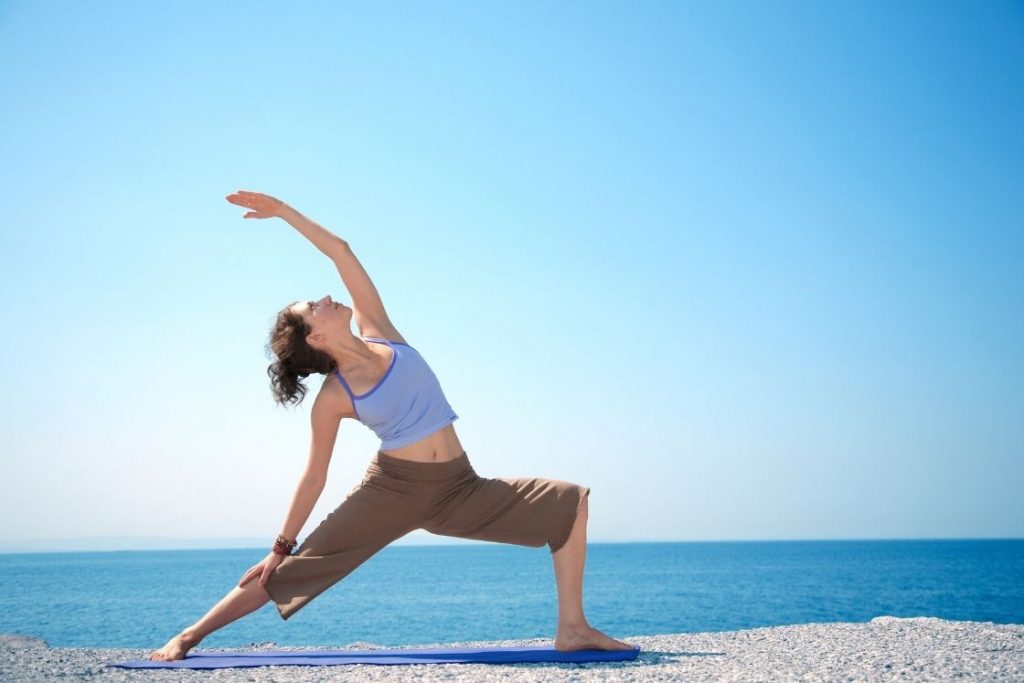
Ashtanga Yoga is one of the most dynamic and physically demanding types of yoga, popular across yoga studios worldwide. Developed by Indian yoga master Sri K. Pattabhi Jois in 1968, this style is also known as Ashtanga Vinyasa Yoga.
Ashtanga follows a set sequence of postures performed in a flowing rhythm, synchronised with breath and movement (vinyasa). Unlike other yoga styles that vary class-to-class, Ashtanga always follows the same sequence making it a disciplined and structured practice.
What is Ashtanga Yoga?
Ashtanga Yoga consists of six series:
- Primary Series (Yoga Chikitsa) – detoxifies the body and aligns posture
- Intermediate Series (Nadi Shodhana) – cleanses the nervous system
- Advanced Series A–D (Sthira Bhaga) – focuses on strength, balance, and grace
You must master one series before progressing to the next, making this a system of gradual advancement based on dedication and consistency.
Many popular modern styles like Power Yoga, Rocket Yoga, and Jivamukti Yoga are rooted in Ashtanga.
Key principles of ashtanga yoga
There are five key components in Ashtanga practice:
- Ujjayi breathing – deep, controlled breath
- Vinyasa – linking breath with movement
- Bandhas – internal energy locks
- Drishti – focused gaze for concentration
- Asana sequence – set order of poses with transitions
What to expect in an Ashtanga Yoga class?
A traditional Ashtanga class usually starts with a chant of gratitude to the lineage of teachers, followed by:
- Sun Salutations (Surya Namaskar A & B) – five rounds each
- A fixed series of asanas held for 5–8 breaths
- Vinyasa transitions between poses to build internal heat
- Closing mantra to end the session with focus and calm
In a Mysore-style class (a self-led version of Ashtanga), students move through the sequence at their own pace, with teachers offering individual guidance and hands-on adjustments.
Benefits of ashtanga yoga
- Enhances flexibility and strength
- Boosts the immune system
- Improves respiratory system and oxygen circulation
- The process of detoxification is promoted by generating internal heat
- It is one of the perfect ways to enhance your concentration and relieve stress
- Helps in clearing the mind and building self-discipline
Who should practise ashtanga yoga?
Ashtanga is ideal for:
- Practitioners who love a structured, challenging routine
- Fitness enthusiasts who enjoy intense, cardio-like movement
- Yogis aiming to perfect each pose and build physical discipline
- Experienced practitioners who want to deepen their practice over time
Due to its physically demanding nature, Ashtanga Yoga is best suited for intermediate to advanced practitioners, though beginners can start slowly with guidance.
3. Vinyasa Yoga
Vinyasa Yoga is one of the most popular types of yoga in the West. It evolved from the Ashtanga Vinyasa tradition and is known for its flowing, dynamic movements that connect breath with motion.
The word “Vinyasa” comes from Sanskrit: “nyasa” means “to place” and “vi” means “in a special way.” In practice, this refers to placing each posture intentionally and mindfully one after another—guided by the breath.
Unlike Ashtanga, which follows a fixed sequence, Vinyasa Yoga classes vary by teacher and theme, making each session feel fresh and creatively sequenced.
What is vinyasa yoga?
Vinyasa is an energetic, breath-based style of yoga where movements are linked smoothly together in a continuous flow. It uses:
- Ujjayi breathing to control energy and focus
- Bandhas to stabilise the core and spine
- Creative sequences that move from basic to advanced poses
Vinyasa is often called “flow yoga” because of its fluid transitions between postures, offering a moving meditation that strengthens the body and calms the mind.
What to expect in a vinyasa yoga class
A typical Vinyasa class begins with Sun Salutations (Surya Namaskar) to warm up the body. From there, students move through a sequence of poses, including:
- Standing poses
- Balancing postures
- Forward bends and backbends
- Twists and inversions
- Seated or supine stretches
Many Vinyasa classes are designed to build toward a peak pose, with earlier sequences helping to prepare the body.
Each teacher brings their own creative style, so no two Vinyasa classes are exactly the same—but you can expect to repeat sequences, hold poses for a few breaths, and move with rhythm and control.
Benefits of vinyasa yoga
Practising Vinyasa Yoga regularly can lead to:
- Improved muscle strength and endurance
- Enhanced balance and core stability
- Better oxygen flow and circulation
- Increased cardiovascular health
- Boosted internal heat, aiding detoxification and metabolism
Who should practise vinyasa yoga?
Vinyasa is great for:
- Those looking for a faster-paced, intense yoga workout
- People with a decent fitness level such as runners, dancers, or athletes
- Yogis who enjoy creative, changing sequences
- Anyone wanting a blend of cardio, strength, and flexibility training
If you enjoy movement, sweat, and mental focus all in one session, Vinyasa Yoga could be the perfect fit.
4. Iyengar Yoga
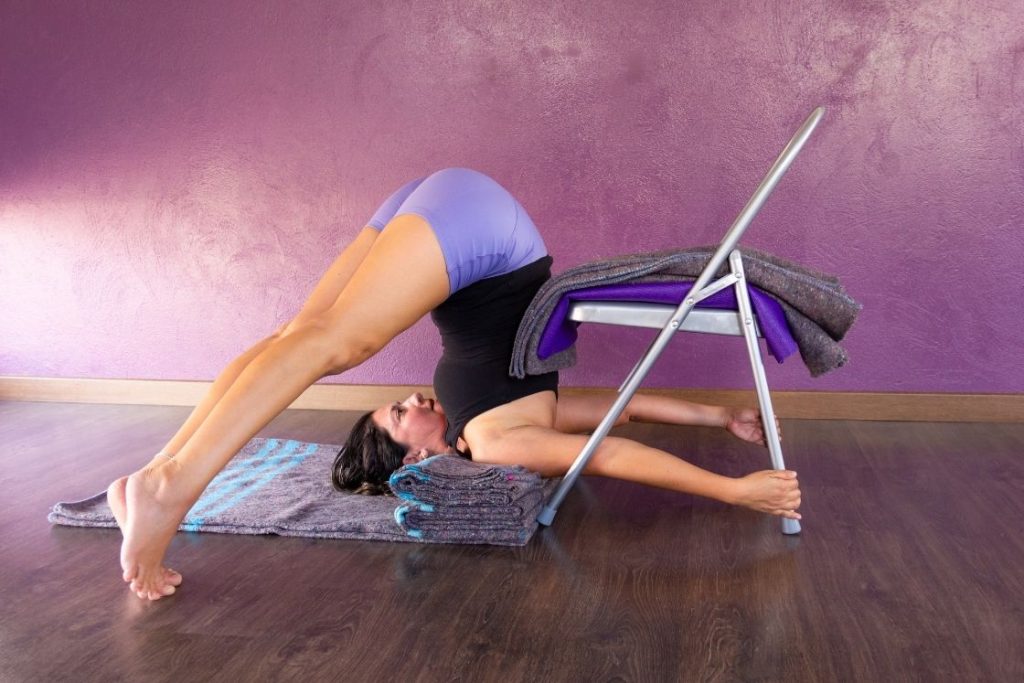
Iyengar Yoga is a gentle yet disciplined type of yoga that focuses on alignment, precision, and postural awareness. Developed by B.K.S. Iyengar in the 1970s, this style evolved from classical Hatha Yoga and is widely known for its use of props like blocks, straps, blankets, and chairs.
What sets Iyengar apart from other yoga styles is its emphasis on holding poses for longer periods and performing each posture with correct alignment. Movements are slow, deliberate, and refined making this practice ideal for beginners, seniors, and people recovering from injury.
What is iyengar yoga?
Iyengar Yoga aims to bring the body into optimal alignment, ensuring that each joint and muscle works in harmony. Props are used to support students of all levels, helping them access postures safely and correctly without strain.
Unlike Vinyasa Yoga, which moves quickly from one pose to another, Iyengar focuses on stability over speed, allowing students to fully experience the benefits of each pose.
Because of its technical nature, it’s recommended to practise Iyengar Yoga under the guidance of a certified instructor to avoid injuries and get personalised adjustments.
Also read: Common Iyengar yoga poses with a chair
What to expect in an Iyengar yoga class?
An Iyengar Yoga class is typically structured around a target area of the body such as the spine, hips, or shoulders—and builds progressively through poses that open and strengthen that area.
Here’s what a class often includes:
- A short period of quiet or breath awareness to begin
- Standing or foundational postures to energise and mobilise
- Use of props like blocks, straps, blankets, ropes, and chairs
- Detailed verbal instructions and hands-on adjustments
- More frequent practice of inversions (e.g. headstand, shoulder stand) at intermediate levels
- A restorative closing sequence to balance and reset the body
This style of yoga encourages patience, mindfulness, and a deep connection with the body’s structure and function.
Benefits of Iyengar Yoga
- Improves flexibility and range of motion
- Stretches, tones, and strengthens the muscles
- Help relieve back and neck pains
- Brings the focus around alignment of the spine
- Corrects posture by reducing slouching and hunching
- Improves the immune system which prevents the onset of diseases and ailments
- Increases awareness about the working of the body
Who should practise iyengar yoga?
- Beginners who want to learn proper alignment
- Seniors or those looking for a low-impact yoga practice
- People recovering from injury or managing chronic pain
- Yogis who enjoy structured, mindful movement
- Anyone wanting to improve posture or address spinal imbalances
If you’re looking for a precise, therapeutic, and supportive yoga style, Iyengar Yoga offers a safe and structured path.
5. Hot Yoga
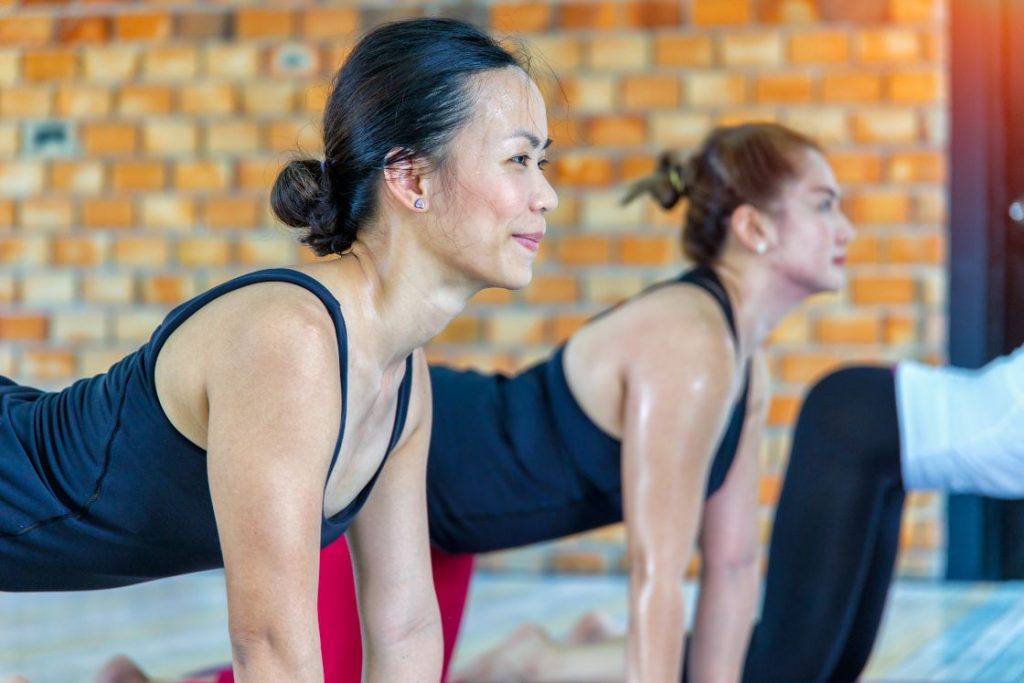
Hot yoga is popularized by a Indian yogi Bikram Choudhury in 1970s. He named this yoga style after his name, Bikram Yoga. However, today many yoga studios run hot yoga class different bikram yoga tradition.
As name shows, hot yoga is a special yoga type where poses are performed in a fixed order at a room heated to 95 to 104 degrees Fahrenheit and 40% humidity. The room is maybe carpeted, with mirrors on the walls. The yoga postures of the pupils may not be adjusted by the instructor.
Yoga studios using the generic term Hot yoga don’t utilize the set poses to keep a certain amount of flexibility in the sessions.
It is advised to be sufficiently hydrated before hot yoga class as the hot and humid room causes excessive sweating.
What to expect in bikram/hot yoga class?
You can anticipate a quicker warm-up in a hot yoga class as the hot environment of the studio takes less time to warm up your muscles. Then, you’ll be guided through a sequence of yoga poses.
If it is a traditional Bikram yoga style, you would be practicing the pre-determines 26 bikram yoga poses – 24 asanas and 2 pranayamas. In a generic hot yoga session, the yoga poses are determined by the instructor.
The class is expected to last 60 to 90 minutes. The poses are practiced at a slow pace with a focus on stretching and alignment.
Unlike other yoga courses when the instructor performs the moves, hot yoga instructors frequently instruct without performing them themselves.
You’re frequently encouraged to enough time in Savasana at the end of each session.
Benefits of Bikram/Hot Yoga
- Enhances detoxification process
- Aids in weight loss
- Strengthens the lower body significantly
- Builds flexibility, strength, and endurance
- Improves respiratory functions
- Faster relaxation and lengthening of the muscles
Hot yoga style is right for whom?
- If you like predictability in your sequence
- You are a fitness enthusiast
- Want to weight loss by burning calories
6. Kundalini Yoga
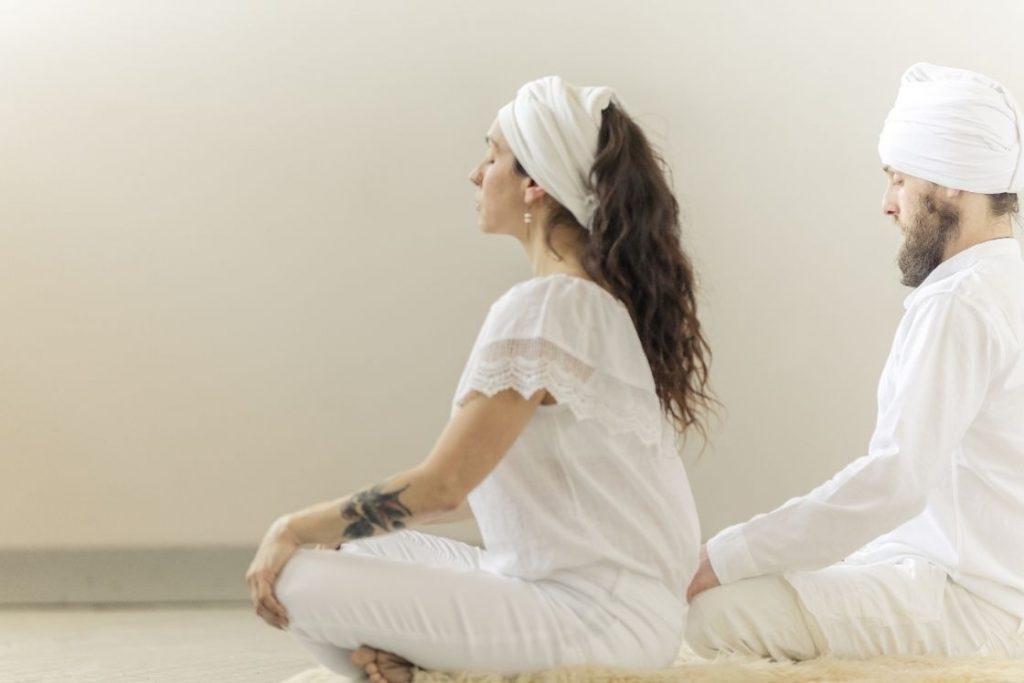
Kundalini yoga is a type of yoga which combines movement of repetitive poses, specific kriyas, breath (pranayama), meditation, and chanting. The aim of this yoga style is to raise the kundalini shakti which believed to lie coiled at the base of the spine.
This yoga style was introduced to the west by Yogi Bhajan around 1969. Kundalini yoga is mainly known for the practice of specific kriyas for awakening kundalini shakti.
Generally it’s performed wearing white clothes during the practice of kundalini yoga kriyas. Practitioners also wear white clothing with a white turban as white is a symbol of purity.
Chanting mantra (Adi mantra or Sat Nam), singing, pranayama, and kriya or repetitious positions are all part of Kundalini yoga. Its purpose is to enhance your degree of self-awareness and consciousness as well as make your body stronger and more energized.
Also read: Exploring Kundalini Yoga and the Tantra Philosophy
What to expect in kundalini yoga class?
A typical Kundalini Yoga class (60–90 minutes) may include:
- Tuning-in with an opening mantra
- Warm-up with breathwork (often Breath of Fire) and light stretching
- A specific kriya sequence (can involve repetitive poses, breath, and sound)
- Restorative poses and meditation to integrate the practice
- A closing mantra to end the session in stillness and gratitude
Each kriya varies in length and intensity, and may be practised multiple times depending on the teacher’s focus.
Benefits of Kundalini Yoga
- Tones and strengthens the muscles
- Supports heart health and balances blood pressure
- Improves digestion and metabolism
- Enhances focus, memory, and cognitive function
- Reduces stress, anxiety, and emotional fatigue
- Promotes self-acceptance and mental clarity
- Builds a stronger spiritual connection and awareness
Who should practise kundalini yoga?
Kundalini Yoga is ideal for:
- People seeking a spiritual practice with physical and mental benefits
- Those interested in breathwork, chanting, and inner energy work
- Anyone looking to relieve stress and increase self-awareness
- Intermediate practitioners or beginners with an open mind and curiosity
If you’re drawn to a practice that goes beyond just stretching and into the realm of transformation, Kundalini Yoga may be a powerful fit.
7. Restorative Yoga

Restorative yoga is a slow-paced yoga style developed by Judith Lasater in 1970s. It emphasizes extended holds, quiet, and deep breathing practice. Restorative yoga “restores” the body’s parasympathetic nervous system function, which allows the body to relax, recover, and balance itself.
Holding yoga poses for longer duration with the use of props is the uniqueness of restorative yoga style. It allows practitioners to open the body in a way that is conducive to healing, deep relaxation and recovery from illness or injury.
Read more: Restorative yoga poses for beginners
What to expect in Restorative Yoga class?
Restorative classes are often limited so each person can get individual attention and support to ensure their safety and well-being.
After you’ve set up a pose with all of your props, you’ll hold it for a long time, possibly as long as 10 or 20 minutes. You might even doze off however you’ll keep your attention on your breathing.
Due to this, the duration of a lesson, you can only do four or five poses in one restorative yoga session.
While you’re at a yoga studio, the teacher will most probably play gentle background music and lower the lights.
Benefits of Restorative Yoga
- Activates the parasympathetic nervous system
- Combat everyday stress, anxiety, tension
- Helps in recovering from injury or illness
- Promotes deep relaxation and sleep quality
- Enhances the body’s potential for healing and balance
- It helps to keep the nervous and immunity in check
- Relieve common aches and pains, such as headaches and backaches
- Helps release physical tension without causing pain
The restorative yoga style is the right fit for you if you’re recuperating from an injury or illness. Generally, it is considered good for beginners and older people because of its gentler, relaxed, and slower-paced style. It allows the body and mind to completely rest and balance while actively doing yoga.
8. Yin Yoga
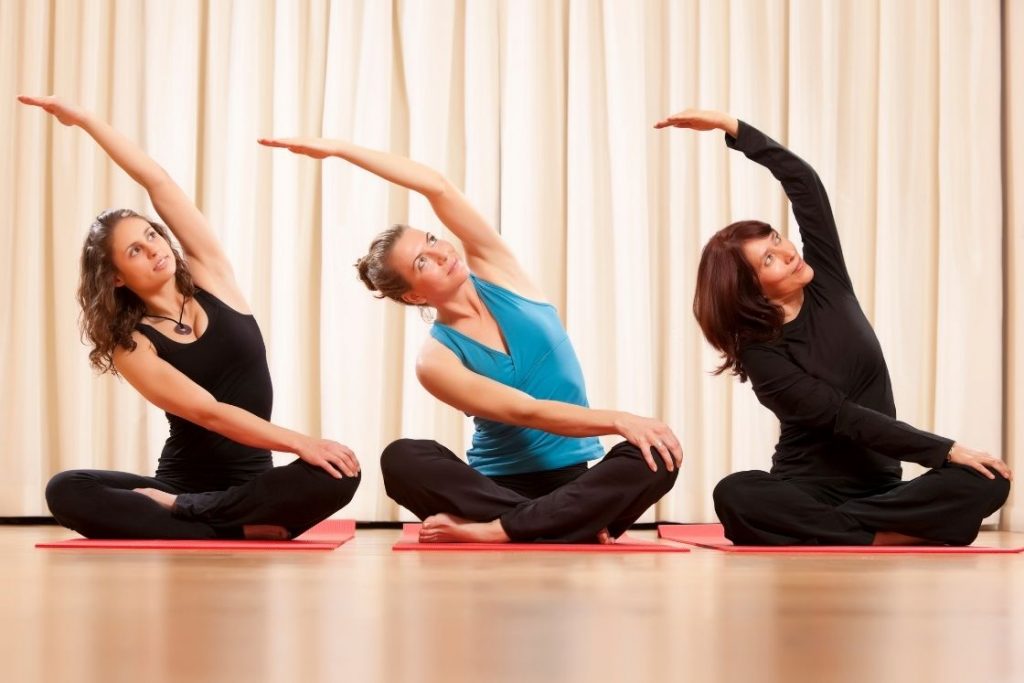
Yin Yoga is a slow and steady-paced meditative yoga style that focuses on connective tissues and is inspired by Chinese Taoist practices. It relaxes muscles by receptive holding through the use of props and seated postures rather than actively engaging them.
Yin yoga style is mainly known for holding sitting, reclining, or lying poses for extended durations with a focus on stretching and strengthening the connective tissues rather than the muscles. It’s different from restorative style in terms of purpose of holding the poses.
In comparison to other yoga types, yin yoga poses are retained for a prolonged period. Rather than refining a posture or increasing muscle strength, your attention is on rest and surrender.
The name of the poses are in English and some of them are quite similar to the hatha yoga poses.
What to expect in Yin Yoga class?
A typical yin yoga class will begin with some breathing exercises to help your body and mind relax. A yin yoga session consists of a sequence of long-held, passive grounding postures that primarily target the lower body — hips, pelvis, inner thighs, and lower spine.
For each pose, the instructor will show you how to use props like blocks, blankets, bolsters, sandbags, and cushions to keep yourself more comfortable.
The postures can last up to five minutes, and in some cases even longer. Because you’ll be holding each pose for a long period, most beginner sessions will involve at least 5-6 poses.
Beginners have the option of easing into their stance earlier if they are uncomfortable.
Benefits of Yin Yoga
- Reduces stiffness and lengthens the connective tissues
- Enhances blood and oxygen flow in the body
- Improves discipline, self-control, patience, and inner strength
- Taps into the parasympathetic nervous system
- Prepares the mind for meditation
- Helps in bringing awareness to your body
- Aids in de-stressing by calming our minds
Yin yoga style is suitable for everyone from beginners in yoga to seniors. It provides low-intensity stretching to support injuries or any chronic health conditions. One who wants to regain joint mobility and deeper tissue massage after an injury can adopt this yoga style. It’s good for relaxing the body as well as calming the mind.
9. Power Yoga
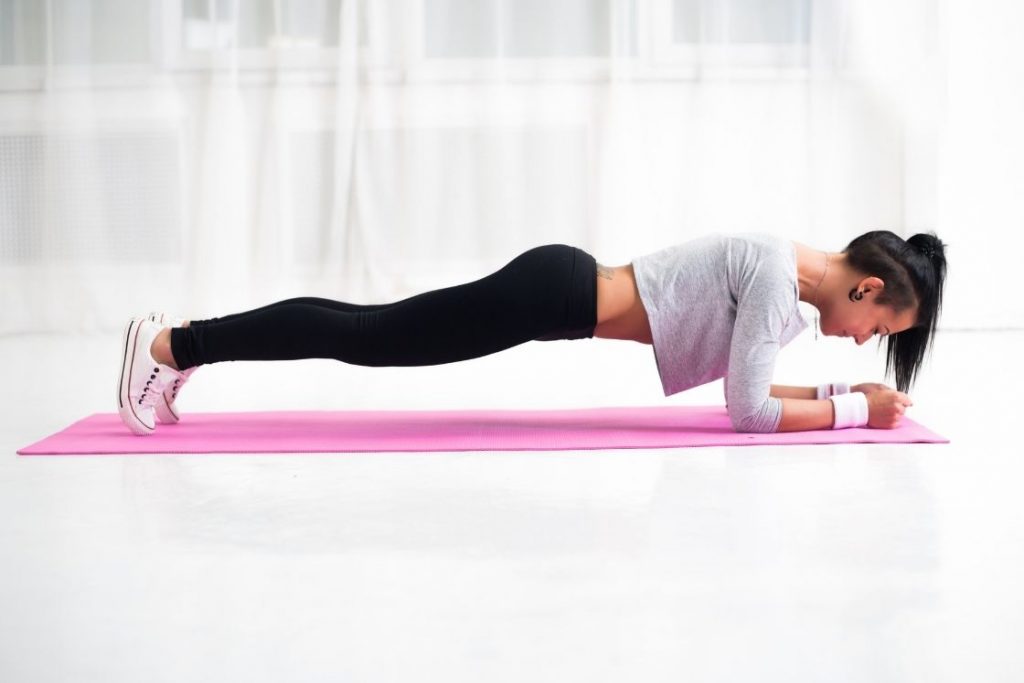
Power yoga is a type of yoga which blends Ashtanga, Vinyasa, and aerobics exercises to create a sweat-inducing workout. Some of the athletic components of power yoga, as well as the flow between the poses, are derived from Ashtanga Yoga.
This yoga style is fast-paced and vigorous, with rapid transitions from one posture to the next. You are, however, aware of the relationship between your breath and your body’s movement.
What to expect in Power Yoga class?
A warm-up will be performed before you begin practicing the power yoga poses. The poses can span from standing to forward bends, balancing, and advanced poses because there is no defined sequence.
The final pose, Savasana, should be held for 10 to 15 minutes to allow the body to relax.
A power yoga class usually lasts 45-60 minutes, but it can last up to 90 minutes for skilled practitioners. The instructor is free to make changes to the structure based on their practitioners’ skills.
Often, power yoga classes are heated, just like hot yoga, with fast-paced workout music playing in the background.
Benefits of Power Yoga
- Improves cardiovascular health
- Tones and strengthens the muscles
- Help you lose weight and lower your cholesterol levels
- Better oxygen and blood circulation
- Enhances flexibility and mobility of muscles and joints
- Improve your stamina, endurance, resilience, and patience
- Improves sleep quality and cognitive function
The power yoga style is most suitable for you if you’re an athlete and fitness enthusiast. It may not be a good choice for beginners to start with power yoga, especially if one has not a decent level of fitness already. However, if you want to practice something intense and holistic instead of going to the gym, power yoga style is good to begin with.
10. Sivananda yoga
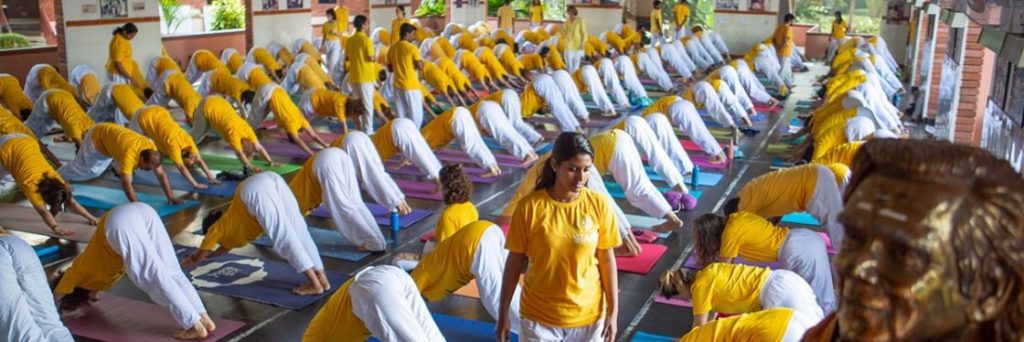
Sivananda Yoga style was created and popularized by Swami Vishnudevananda, a student of Swami Sivananda. This yoga style has strong foundations in traditional yoga that pushes practitioners to advance in their pursuit of consciousness and understanding of the universal.
The teachings of Sivananda yoga connect the practice with the raja yoga of the sage Patanjali and the Bhagavad Gita in addition to providing a comprehensive hatha yoga experience. By ensuring that the body maintains its vitality over time, the Sivananda yoga system seeks to reduce the risk of disease.
In Sivananda yoga, the ancient wisdom of Yoga is synthesised into 5 basic principles according to modern people’s needs. These are called the Five Points of Yoga:
- Proper Exercise (Asana)
- Proper Breathing (Pranayama)
- Proper Relaxation (Savasana)
- Proper Diet (Vegetarian)
- Positive Thinking (Vedanta) & Meditation (Dhyana)
In addition to offering a foundation for moral behavior, Sivananda yoga style promotes fundamental awareness, self-transformation, and the practices to preserve prana (life energy).
What to expect in a sivananda yoga class?
A 90-minute Sivananda yoga class consists of a thorough set of asanas and pranayamas that are always practised in a specific order. There are 12 basic asanas in Sivananda yoga that are generally performed in the class.
A typical class begins with breathing exercises (Kapalabhati and Anuloma Viloma), followed by a few rounds of the Sun Salutation, along with the opening and closing prayers.
This is followed by the Twelve Basic Poses, with Savasana being the final resting pose.
To account for physical capability or time limitations, the basic sequence might be tweaked. Variations of these poses can be taught once the student has mastered 12 basic postures.
Benefits of Sivananda yoga
- Prevents respiratory issues
- Strengthens and tones the muscles
- Improves flexibility of the spine
- Promotes positive thinking
- Boosts the immune system
Sivananda yoga is good for beginners as it focuses on mastering the 12 basic asanas first. It’s also the right choice for seniors because it provides gentle stretching to muscles, joints, ligaments, and tendons. It helps maintain seniors’ joint mobility. With a combination of pranayama, meditation, and a healthy diet, one can focus on overall well-being.
11. Aerial yoga
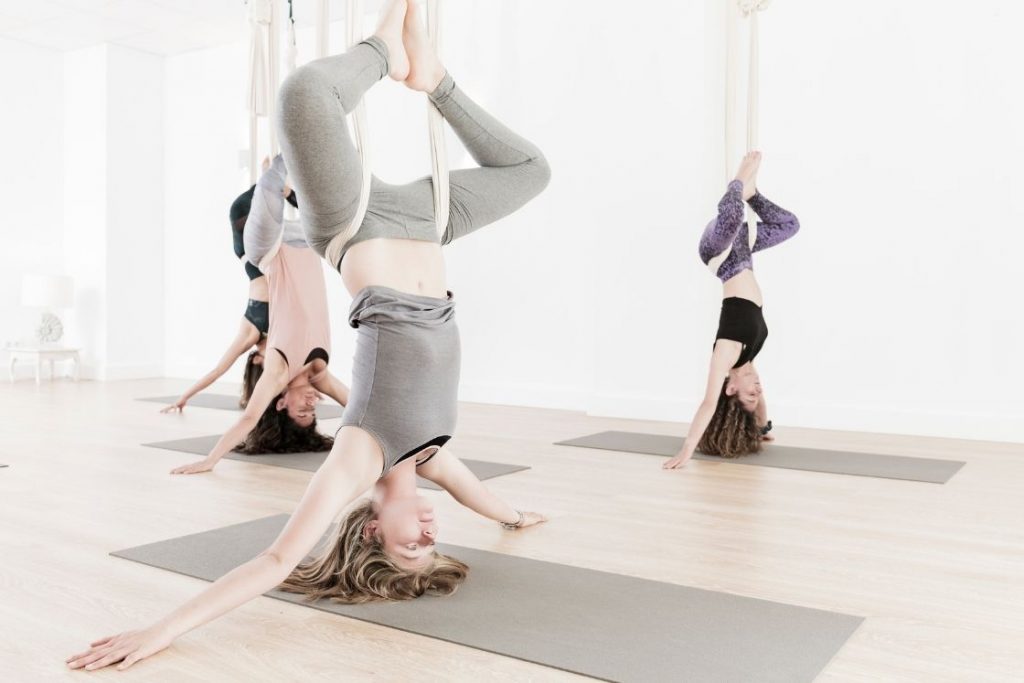
Aerial yoga, as the name sounds, is a unique style of yoga in which instead of performing yoga poses on a mat performed on silk hammock or sling that is suspended from the ceiling. It’s also anti-gravity yoga.
Christopher Harrison, a gymnast, invented and popularised the aerial yoga style.
Most of the postures used in aerial yoga may resemble those used in regular yoga, but they have been modified to maintain the pose on a fabric suspended from the ceiling.
Read more: Beginner’s tips to start aerial yoga
What to expect in an Aerial yoga class?
Aerial yoga classes generally do not have many students, mostly the class size is under 10. This is because you would need space to mode your limbs when hanging from a fabric.
At the beginning of the class, your instructor may go through safety precautions and the proper way to change poses while in and out of the fabric.
It’s also important to keep in mind that you might not get to perform poses on the fabric on the first day. Getting acquainted with your instructor and going over the fundamentals of the equipment may be part of your first aerial yoga class.
New students are typically required to complete beginning aerial yoga lessons at studios as well.
Based on the expertise level and type of the class, the poses can range from being focused on building strength, flexibility, and agility to being restorative and slow-paced. A general aerial yoga class can last up to 90 minutes.
Benefits of Aerial Yoga
- Helps with spinal decompression
- Enhances flexibility and strengthens the muscles
- Enhances core strength
- Can aid with calorie burning and weight loss
- Improves blood circulation to the brain
- Boosts oxygen circulation in the body
- Promotes better concentration and focus
The aerial yoga style may be right for you if you’re experiencing back pain and can’t do traditional yoga poses on mat. In this yoga, hammock allows you to sink deeper in pose and under the influence of gravity less pressure is placed upon your joints and spine.
While aerial yoga can be practised by everyone, irrespective of their prior experience with yoga there are certain limitations to it. If you suffer from any heart condition, motion sickness, blood pressure issues, vertigo, or vision issues, you should first consult your doctor.
Pregnant women should completely avoid aerial yoga practice till they are completely healed and recovered.
12. Prenatal yoga
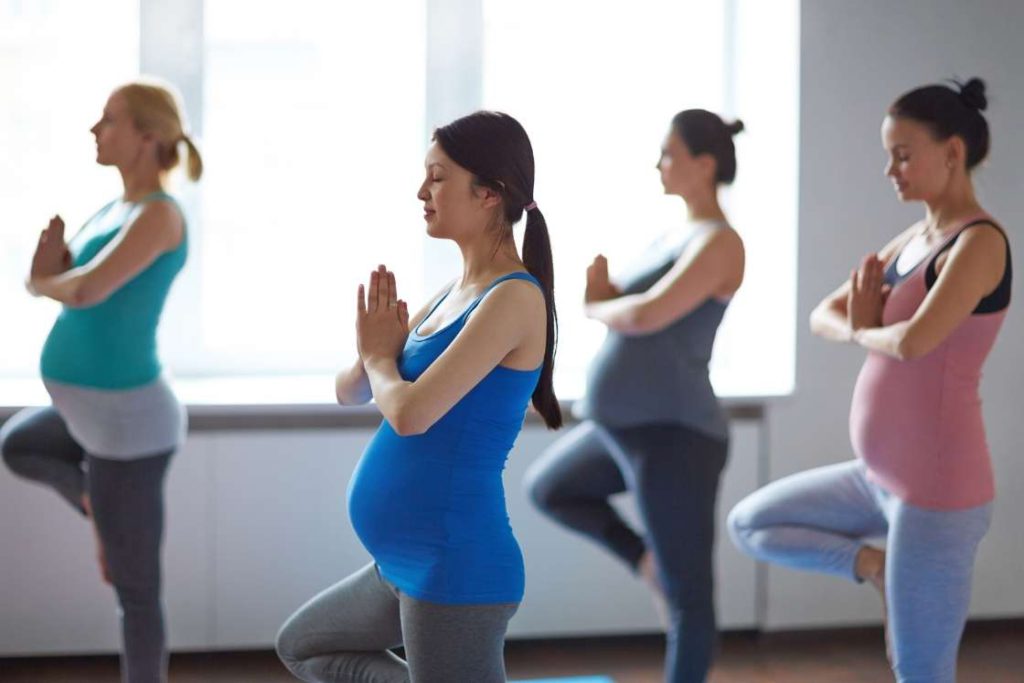
To prepare for labour and have a healthy baby, prenatal yoga is a wonderful practice to do during your pregnancy. It keeps the body flexible throughout pregnancy. Additionally, it aids in postpartum recovery for expectant mothers.
Prenatal yoga type is regarded as a beneficial mind-body exercise that combines asanas, breathing exercises, and meditation meant to reduce stress, build physical strength, and soothe the nervous system.
If your gynaecologist approves, you can begin prenatal yoga in your first trimester. It helps lessen pregnant symptoms like nausea and backaches if you do it correctly.
To suit the numerous adjustments and conditions imposed on a pregnant woman’s body, several poses are modified. While other poses have slight modifications, some are completely eliminated.
What to expect in a prenatal yoga class?
Since pregnancy is a delicate matter for both the mother and fetus, you will be using a lot of props for support such as blocks, cushions, bolsters, blankets, etc.
The session usually starts with the introduction of each participant followed by a brief interval of contemplative introspection and relaxation. To prepare your muscles and joints for class, you’ll gradually get your body moving.
You are then instructed to practice a gentle vinyasas flow which will target the chest, hip, pelvic and abdominal regions. You will also be performing some stretches further lengthen and relax your muscles and end the session with a savasana.
Throughout the practice, you’ll be urged to concentrate on taking deep, calm breaths through your nose.
The savasana will also be modified based on the stage of pregnancy.
Benefits of Prenatal yoga
- Prepares you physically and mentally for childbirth
- Keeps your body fit and healthy
- Reduces morning sickness, cramps, swelling, and stress
- Controls high fluctuations of blood pressure
- Lowers the risk of disorders and diseases for fetus and mother
- Improves quality of sleep
As the name suggests, prenatal yoga is beneficial for expectant mothers. Even though it is beneficial, pregnant women should keep in mind to not overdo the practice in the 1st trimester. In the initial stages, it is meant for acquainting the body and relaxing as much as possible to sustain the hormonal changes.
13. Acro yoga
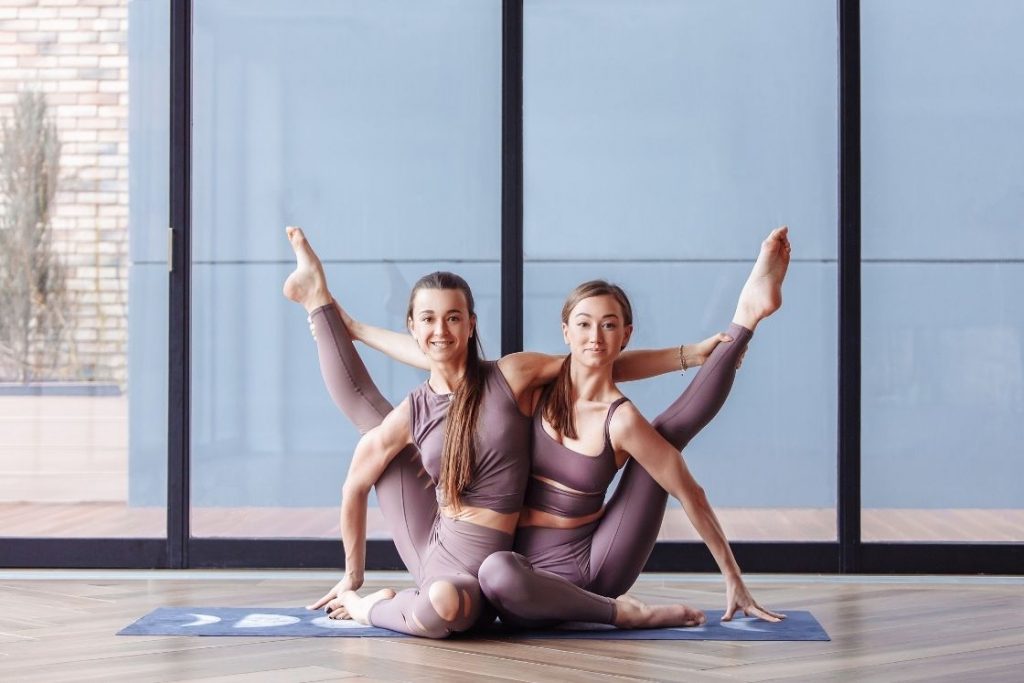
Acro yoga blends the exercises, strategies, and health advantages of Vinyasa and Hatha yoga with acrobatics that is not only beneficial for increasing muscle strength and flexibility but also therapeutic.
Jason Nemer and Jenny Sauer-Klein, who established AcroYoga International in 2003, popularised the present Acro Yoga jargon and usage.
Later, they created a training course to teach yoga instructors the proper techniques for teaching Acro Yoga to their students all around the world.
Acro yoga is a style of yoga that requires two individuals to execute it, therefore it calls for a lot of trust, flexibility, strength, and balance. The base and flyer are the two primary roles in acro yoga. The spotter, who is also a crucial part of acro yoga but is not actively involved, is the third element.
Read more: Partner yoga pose for two persons
What to expect in an Acro yoga class?
Be ready to perform some warm-ups and communication exercises before you start with the actual class. This is done to foster trust between the partners and get you mentally ready for the session.
In order to foster dialogue and open people up to one another, a circle ritual is done.
Everyone then performs warm-up exercises like stretching to get their muscles ready for the upcoming pushes and pulls.
The next step is to select a partner with whom to perform some asanas and stretches. Partner flow is the term for this. It is carried out to promote communication and foster a relationship of trust with them. You also perform some inversions, which will raise the level of trust even higher.
The instructor will next guide you while you execute the acro yoga poses according to your degree of experience.
Benefits of Acro yoga
- Lengthens the spine.
- Helps the back muscles to become stronger.
- The cardiovascular system is improved.
- Improved flexibility owing to stronger joints, muscles, and muscles.
- Enhancing the flow of blood and oxygen to your brain while inversions.
- Become more self-controlled.
- Increase your level of professionalism.
Acro yoga style is good for couples, partners or two people who want to practice yoga together with the help of each other. One must have a certain level of proficiency in order to acro yoga poses, so this yoga style is not for absolute beginners.
People who suffer from cardiovascular issues, vertigo, high blood pressure, or joint problems should avoid doing acro yoga. Also, this yoga style is not for elderly people and pregnant women.
Conclusion
The many yoga types have their uniqueness and benefits. It is now time to determine which yoga style suits your needs. It is always beneficial to first learn some basic yoga poses and founding philosophies to understand the yoga poses.
Be it traditional hatha yoga, modern power yoga, or relaxing restorative yoga, you are bound to achieve overall mental and physical well-being.

